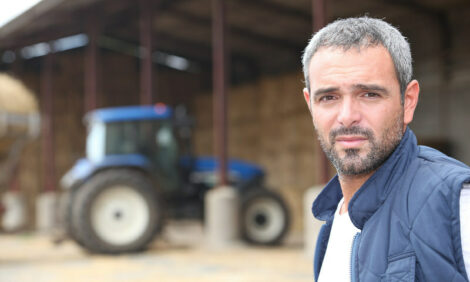



Carthage swine veterinarian: focus on individual pig care can benefit entire production system
Taking care of every single pig seems like a daunting task when producers have hundreds or thousands of pigs under their care.Still, the rewards are well worth the effort, Elise Toohill, DVM, with Carthage Veterinary Services in Carthage, Illinois, told Pig Health Today.
It can make such a big impact on a production system that veterinarians and production people need to continue educating caretakers on how to make individual pig care easier and more efficient, she said.
Toohill worked for The Maschhoffs, Inc., prior to joining Carthage, so she speaks from experience on the benefits of individual pig care. She and staff members set up protocols and systems to train people in the field on how to easily identify sick pigs. They determine why pigs are sick and categorise the illness, which leads to a proper treatment recommendation. That treatment might be an antibiotic or may simply involve pulling the pig out of the pen to give it more isolated care and individual attention.
As new employees join an operation, they are trained to use the same processes and protocols. “As our field team and veterinarians are in the barn auditing how well we’re executing, we can always bring them back to, ‘Here’s how we need to assess the individual pigs every day, and here’s what we need to do based off of what they need,’” she said.
Power of observation
Toohill said spending time watching pigs and observing their behavior is important.
“Our caretakers are in the barn every day,” she said. “The pigs tell us [through their action and activity] what they need, so you can train your people to think about making observations…, even while they’re checking feeders and waterers.”
Caregivers will pay more attention to pigs that need to be pulled and treated or will notice lameness issues as they’re walking the barn. An emphasis on individual care helps them focus on their daily responsibilities more effectively, she said.
Multiple benefits
Outcomes associated with individual pig care make the effort worthwhile, from the standpoint of responsible antibiotic use to a better return on investment.
“We prioritize judicious use of antibiotics,” Toohill said. “We also know that injectable treatments tend to be one of the best forms of delivery by giving the right antibiotic, at the right dose, at the time the pig needs it. If you can identify pigs that are just starting to get sick and get a treatment into them at an early stage, you have a much higher likelihood of success.”
Even if a pig doesn’t need a treatment, individual pig care helps caregivers identify fall-out pigs that might not be getting adequate feed or water.
“Sometimes it’s as simple as getting a pig out of the pen to a different situation,” Toohill said. “Your overall group will be more consistent and will have better gains and lower mortality as a result.”
Not just for younger pigs
The principles associated with individual pig care can be applied to different age groups, but Toohill said since weaning is such a critical point in the life of a pig, it becomes the primary focus.
“However, as a pig gets older, we tend to see things like lameness or other clinical signs, and…individual pig care can definitely be applied to those situations as well,” she said.
The same is true of the sow herd. Caregivers can identify when a sow is showing signs of lameness, for example, or when she goes off feed or when she might have a fever in the farrowing house.
“All of those clinical signs are important - they’re just a little bit different,” Toohill added.
Pinpointing problems
The sites producing the best results are those in which people know how many pigs they’re treating for various clinical signs, she said.
“Let’s say last week I was treating three to five lame pigs in a pen, but this week there are 10 to 12 lame pigs,” Toohill explained. “Through the knowledge I have of the site, I can convert that number to a total prevalence of lameness and that helps me, as a veterinarian, to gauge how our individual strategies are working.”
Toohill said there are times when caregivers are working hours and hours a day in the barn doing treatments. “If they can communicate with me how much they’re doing [on treatments] and how that’s changing over time, then we can work together to think about other strategies that could also impact disease control, and we can figure out other ways to help them improve,” she concluded.








